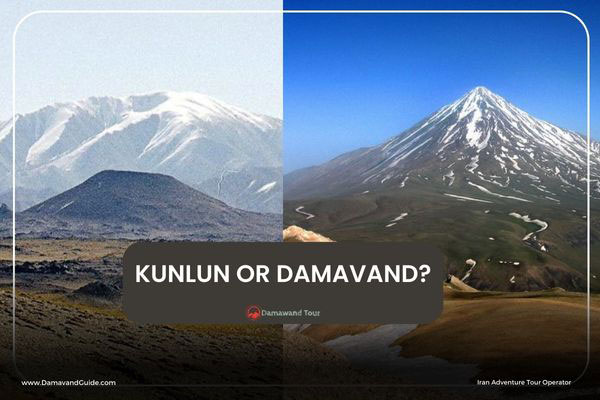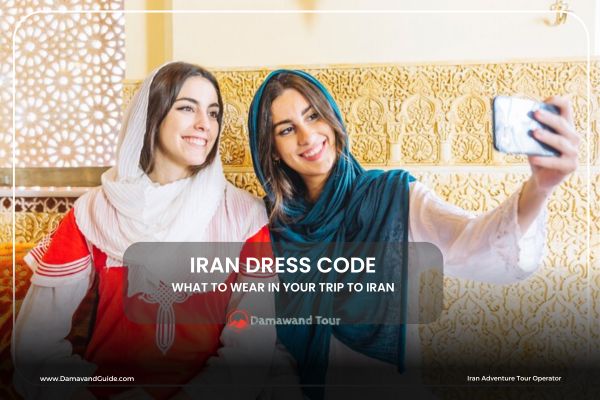
The Tallest Volcano in Asia
March 9, 2024
Is Airspace in the Middle East closed?
April 16, 2024Iranian Clothing History in Different Periods
The history of Iranian people’s clothing, or Iranian clothing history, is generally part of human civilization and culture history. To understand clothing in Iran, one must also study Iranian culture.
Clothing protects the human body from the weather and other dangers in nature. It can also be used for comfort, modesty, and safety. Clothing can represent religious beliefs, cultural meanings, and other social meanings. Nowadays, in the 21st century, wearing clothing, especially Iran clothing, is more for fashion and looking stylish than for comfort and other uses.
The style and type of clothing in ancient Iran always had unique styles and methods, depending on the conditions. This aspect of Iran clothing shows the country’s rich cultural heritage. Studies show that covering the whole body, both for women and men in Iran during different historical periods, was a reality, and Iranians never lived in nudity. However, it should be considered that the complete and decorated dress with ornaments among women in Iran was very different from wearing a black chador, and it had its unique style. Some believe that this complete and decorated dressing is somehow rooted in the creation of the hijab in the world.
The history of clothing in Iran, or the evolution of Iran clothing, also has a deep connection with hijab, meaning complete covering, aesthetics, and love for beauty. Iran is a land of beauties and delicacies, our people carry a deep and rooted culture, with a mix of religion and history. A history that has spread its roots in the farthest corners of the world.
The more a land’s culture and art are related to the foundational beliefs and long-standing thoughts of a nation, the more it influences the depth of the people’s aesthetic appreciation in that land. The manifestations of dressing and choice of clothing among Iranian women, particularly in the context of Iran clothing, are so remarkable that some scholars and civilization historians have introduced Iran as the main source of promoting hijab in the world.
Research findings show that women in Iran, from the time of the Medes (who were the first Aryan inhabitants of Iran), had a complete hijab including a long pleated dress, pants up to the ankles, and a long cloak over their clothes, highlighting the significance of Iran clothing traditions. This hijab was also common during the various Persian dynasties. In the time of Zoroaster, before and after, Iranian women enjoyed a complete hijab. According to historical texts, at all those times, covering the hair, wearing long dresses, pants, and chadors was common, and women freely moved outside the home and worked alongside men. And this was accompanied by a complete hijab and strict avoidance of corrupt mixing.
The cultural position of clothing among noble women in Iran was such that during the total reign of the kings, when Xerxes ordered Queen Vashti to come to the feast without cover so that the attendees could see her beauty, she refused. For this defiance, she was, by the judgment of the judges, stripped of the title “Queen of Iran,” illustrating the deep cultural roots and importance of Iran clothing traditions.

Iranian clothing history in the Median era. Iran clothing history
Iranian Clothing in the Median Era: Clothing of Women and Men
Women and men’s clothing during the Iranian Median era was almost the same in shape.
The Medes were the first widespread government on the Iranian plateau. They, belonging to any class or tribe, sought out anything they believed was for beautification as a vital need.
In their pursuit of adornment, they utilized whatever materials were available at the time, from gold, silver, bronze, and iron to plaster, stone, and shells.
Based on the bas-reliefs and pre-BC statues, an important aspect to note is that the Iranian clothing of women in the Median era, despite slight differences, was similar to that of men.
Men and women were distinguished by the differences in their headwear.

Iranian clothing history in Achaemenian era. Iran Clothing history
The history of Iranian clothing in the Achaemenid period
During the Achaemenid era, women’s clothing was usually a simple and long dress. The Persians, led by Cyrus, overthrew the Median government and established the Achaemenid dynasty. In terms of clothing, they were similar to the Medes. Specific details about women’s clothing of this period include:
“From some of the surviving designs from that time, we see native women wearing interesting clothing. Their dresses were simple and long, sometimes with pleats and short sleeves. We also encounter other women from that era who rode horses from the side. They wore a rectangular cloak over all their clothes, under which was a long dress with a long skirt, and under that, another long dress visible down to the ankles.”
The images left on the stone tablets of the Achaemenid period show that there was a similarity between the clothing of Persian women and men. Apart from the dress similar to what the queen wore, Persian women also had other clothing. Their dresses were simple, long, or had pleats with short sleeves, and the skirt had tassels hanging from the ankle down from the knee. In addition to these, Persian women also used a cloak, which they threw over their bodies in such a way that it covered all the clothes underneath.
The designs on the Pazyryk carpet, found in Siberia and believed to be related to Iran during the Achaemenid period, confirm this because the women depicted on this carpet wore something similar to a cloak over all their clothing.
Clothing History of Iran in the Parthian Era
Iranian clothing history, during the Parthian era, women’s clothing included trousers and a tunic.
This period, as in earlier times, was marked by the completeness of Iranian women’s attire.
Regarding this aspect of Iranian clothing history, we find descriptions such as:
“Parthian women’s attire featured a long ground-touching tunic, which was loose, pleated, with sleeves, and a straight collar. This was layered with another tunic on top.
The second tunic was shorter than the first and featured an open collar. Over these tunics, a veil was commonly worn.”
These tunics were crafted from patterned fabrics, with a particular emphasis on embroidery.
Footwear was simple, reflecting Parthian era styles, and belts were distinctively fashioned from bands used to cinch the waist under the bust, adjusting the tunic’s fit.
A notable relief in the Louvre Museum depicts a woman of the Parthian era, illustrating these clothing details.
She is shown wearing a veil, with her turban underneath prominently displayed.
A decorative and protruding metal band is seen across the forehead (just below the turban), covering the front hair and elegantly drawn towards the back.
Further descriptions in the annals of Iranian clothing history note:
“Parthian women’s veils were vibrant, often in purple or white shades.
The veil’s corner was secured under an ornately decorated oval metal plate or button, connected to the neck with a chain.
This arrangement of the veil ensured that it covered the turban at the back and sides, a detail illustrating the intricate nature of Iranian clothing history during the Parthian era.

Iranian clothing history in Sassanian era. Iran clothing history
Iranian Women’s Clothing in the Sassanian Era
During this pivotal chapter in Iran clothing history, Ardeshir made Zoroastrianism the official religion of the country. This period marks a significant phase in the evolution of Iranian cultural and religious practices, notably influencing Iran’s clothing history. Ardeshir’s efforts in translating the Avesta and rebuilding the ruined fire temples had profound implications not only for religious practices but also for cultural expressions, including dress codes.
Women’s clothing during this era, a crucial aspect of Iran clothing history, retained the tradition of full veils, highlighting the continuity and adaptation of Iranian dress codes through time. The historical narrative states, “The veil, which had been a longstanding element in Iranian women’s attire across previous eras, continued to evolve during this period.” This reflects the deep-rooted tradition of veiling in Iran clothing history, illustrating how cultural and religious tenets shaped dress codes.
Since Zoroaster did not perceive any deficiency in the principle of the veil and women’s clothing in Iran, he sought to reinforce the cultural foundations of veiling. By endorsing the prevailing norms around the veil’s limits and quality, he aimed to deepen its internal acceptance, thereby ensuring its adherence and contributing to the continuity and stability of veiling practices in Iran clothing history.
An examination of stone carvings and designs from several ancient plates offers invaluable insights into Sassanian women’s attire, a key chapter in Iran clothing history. Sassanian women are depicted wearing long dresses, either sleeveless or with sleeves, characterized by pleats and a loose fit. These garments were often cinched under the chest with a band, a style reminiscent of Parthian women, showcasing the evolution and diversity of women’s fashion in Iran clothing history.
The detailed descriptions of folding and pleating techniques, especially the additional pleated fabric at the skirt’s end and the variety in neckline designs, underscore the sophistication and creativity embedded in the clothing traditions of Iran. Additionally, the mention of Sassanian women wearing loose, pleated veils that extended to their calves further enriches our understanding of the historical nuances of women’s clothing in Iran.
Iranian Women’s Clothing in the Safavid Era
Women’s clothing during the Safavid era took a specific form due to customs and religion. Due to the Safavids’ attention to Iranian customs and the Twelver Shia religion, various fields of industry and art significantly progressed, among which women’s clothing took a specific form due to the special socio-religious fabric of that time. Dresses were often colorful, floral, and made of silk brocade, and they wore a long open-front robe to the ankle, fastening a belt around the waist loosely, small hats, chadors, embroidered cotton trousers, and short fabric socks were among the clothing used by women in winter. When going out, women would wear a large white or purple veil covering their entire body, leaving only the front of the face open so they could see ahead.
Iranian Clothing in the Zand Era
In the Zand period, women’s clothing included tight shirts made of cotton and silk. After Nader Shah Afshar and his dynasty, the extravagance of clothing was reduced, and clothes took on a simpler form. Features of the clothing of this period included the shortening of skirt lengths (blouses) and coats, and the form of trousers (tight or loose) and their materials and decorations became more important. Generally, in the Zand era, women wore tight shirts made mostly of cotton and silk. Round necklines (without collars) that were fastened with a ribbon or button below the throat in the middle. When needed, over the shirt, they often wore a long coat that covered half of the body. Women of this period, like men, wore loose and long trousers made of diagonally sewn striped fabric and wore a relatively long and loose skirt over it that reached mid-calf. Women in this era draped a beautiful veil or fabric loosely over their heads and decorated their hair with jewelry. Their shoes were curved-tip slippers that only slightly covered the toes. When leaving home, women would wear a black, purple, or bright blue veil and completely cover their faces with a face-cover.
Iran Clothing in the Qajar Era
During the Qajar period, women’s outdoor attire remained traditional. Women’s clothing in the Qajar era was similar to that of the Zand period, with very few changes. Dresses from the previous era with long sleeves and wide, pleated skirts decorated with lace, sequins, and other embellishments were common. Women wore belts made of gold, silver, or adorned with jewels around their waists. Like in the Zand era, clothing included decorative headgear and veils, while prayer veils and traditional overgarments were not yet common.
The travels of Naser al-Din Shah Qajar to Europe and Russia, where he observed the tight-fitting and thin trousers worn by ballerinas in St. Petersburg under very short tunics, inspired him to introduce similar attire for the women of his harem. Their traditional clothing included a variety of garments like dresses, undergarments, and pants, which he wanted to change.
The geographic position of Iran, acting as a bridge between East and West, exposed the country to invasions and cultural influences throughout history. These invasions, carried out by various cultures with their own unique beliefs, put significant pressure on the native and traditional culture of Iranian society. Iranians, who from ancient times believed in the modesty of women and even worshipped deities in a state of purity, found their traditions under threat, especially after adopting Islam, which emphasized women’s modesty even more.
Invasions like those by the Mongols challenged the presence of uncovered women in public spaces, but this was reversed with the rise of Shiite governments like the Sarbadars and Safavids, ensuring that Iranian women continued to participate in society with proper attire.
Thus, the Qajar era marks a significant period of close confrontation with the West. Iranians experienced their first major defeats against the West during the Iran-Russia wars, which forced them to recognize the military and scientific superiority of their opponents. The wars and the increased presence of foreigners in Iran, along with sending Iranian students abroad, introduced Iranians to Western lifestyles. This influenced men’s fashion significantly, introducing shirts and leather shoes into common use.
Changes in women’s indoor clothing began after Naser al-Din Shah’s travels to Europe and gradually spread from the royal harem to the homes of the elite and other social classes. However, traditional women’s outdoor attire (such as veils and overgarments) remained unchanged until the Constitutional Revolution and for some time after.
Iranian Clothing in the Pahlavi Era
The introduction of European goods into Iran during the Pahlavi era led to significant changes in clothing. The presence of European fabrics and fashion, including French tailors and designers, gradually transformed Iranian attire, especially for women. The size of traditional veils was reduced, and the use of young people’s face coverings largely disappeared, making hats more common. Trousers evolved into machine-made long socks, and traditional garments gave way to long, one-piece dresses that varied in length according to the day’s fashion. European-style jackets, vests, and blouses replaced traditional tops, and fabrics evolved from brocade and velvet to crepe, satin, and georgette.
Iranian Clothing and Fashion During the Islamic Revolution
The political changes in Iran after the Revolution significantly impacted women’s society, with political parties and various groups prioritizing women’s education and reforming their status. They saw women’s participation in society as a key aspect of modernization and sought to address the main obstacles presented by traditional lifestyle and clothing. This led to a hidden but persistent movement advocating for women’s freedom from oppression, emphasizing their social participation and discussing the issue of hijab.




